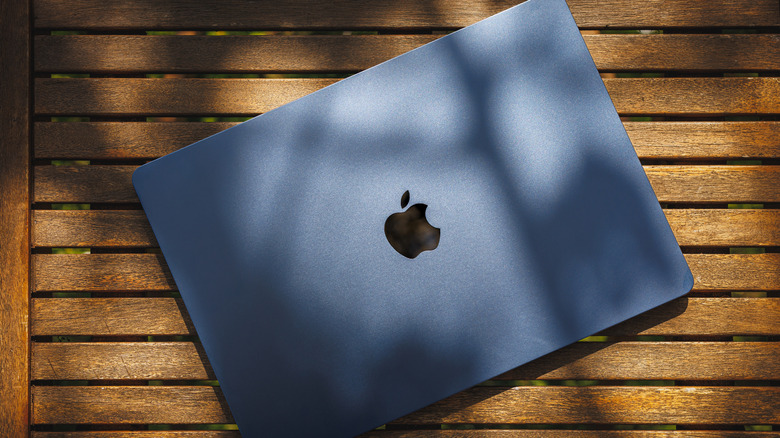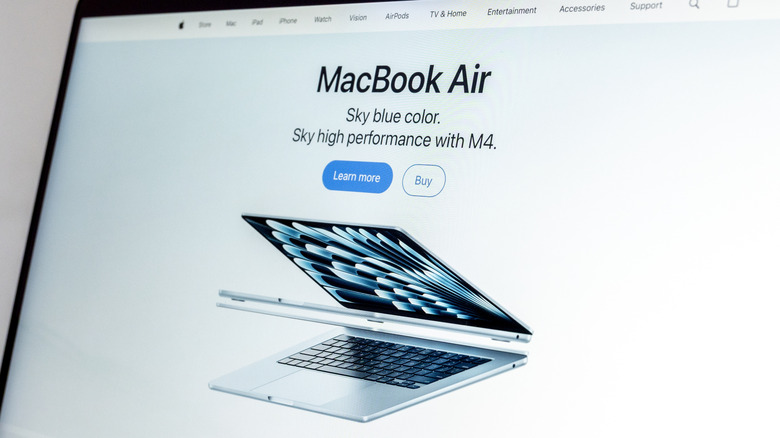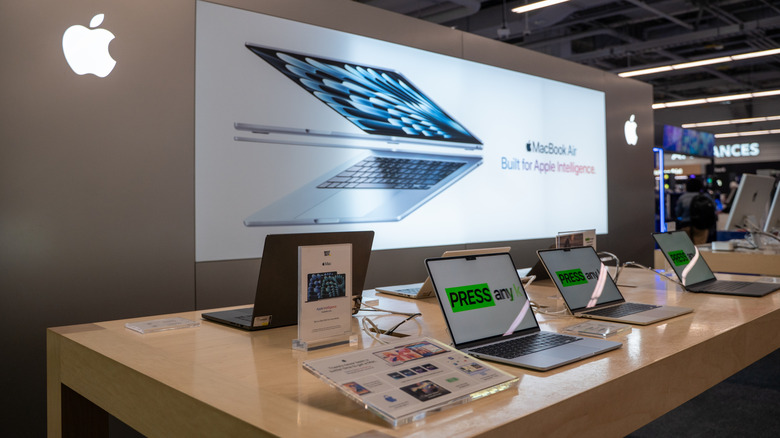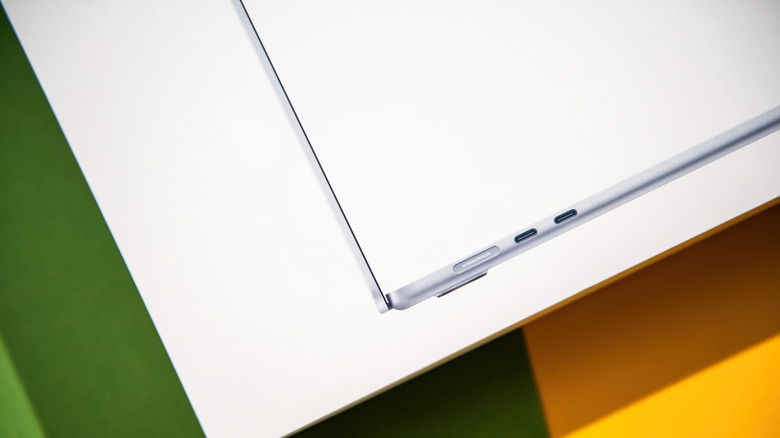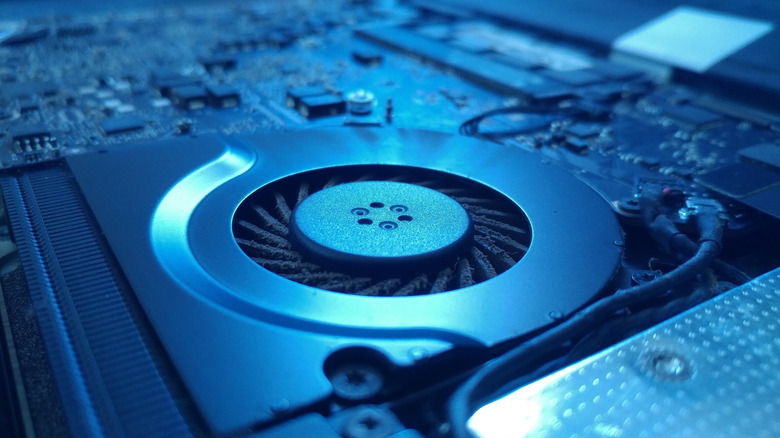Thinking About Buying A MacBook Air? Here Are 5 Things You Need To Know
We may receive a commission on purchases made from links.
The MacBook Air has always been one of the best thin and light laptops on the market, and Apple's migration from Intel chips to its own silicon a few years back has further enhanced its allure. The M-series chips have consistently delivered top-notch performance with impressive battery life. Besides the solid performance, the MacBook Air sports a beautiful design, a sturdy metal chassis, and a vibrant display — making it a top option for most people. So, if you're thinking of buying one, it's hard to go wrong.
However, it's still a good idea to consider a few things before you pull the trigger to ensure you get the best option for your needs. There are two sizes, multiple storage configurations, and several generations to choose from. One wrong decision right now can impact the lifespan of your purchase and can force you to upgrade early. So, here are some of the most important things to know before ordering a MacBook Air.
Which chip generation to get: M4, M3, or M2?
Although the latest generation – the M4 MacBook Air was unveiled in March 2025, it's not the only MacBook Air model you can find in the stores. Depending on where you look, you can find M2 and M3 chip models as well. While we won't recommend getting these older models unless you receive significant discounts, those can be valid purchases for someone on a tighter budget. If you aren't too concerned about pricing, though, it's best to go with the M4 MacBook Air. Besides the faster performance and support for the AV1 decode engine, your MacBook will have a longer lifespan and support for two external monitors – a feature that's not available on older MacBook Air versions.
However, if you have a slightly lower budget, the M3 MacBook Air is still a solid option as it's not too old and can save you about $150, as per a listing on Best Buy. It also supports up to two external displays, provided you close the lid of your MacBook. M2 models aren't as common anymore, but if you spot one with a major discount, it can be a value-for-money purchase. It's still a decent machine for everyday computing.
Get the right RAM and storage configuration
Apple is notorious for offering expensive RAM and storage upgrades. However, since you can't upgrade the RAM or SSD after you purchase the laptop, it becomes important to pick the configuration that can handle your needs, not just in the present but also in the near future. So, balance is the key when picking a MacBook Air configuration. Fortunately, Apple ditched the 8 GB RAM MacBook Air variants in 2024, and the M4 MacBook Air starts with 16 GB of RAM — enough for most people requiring a MacBook for everyday computing. However, if you plan to use it heavily for memory-intensive tasks, such as content creation, virtual machines, games, and significant multitasking, it's best to upgrade the RAM at the time of purchase.
Similarly, low onboard storage can quickly become a bottleneck in your MacBook Air experience. So while the base M4 model's 256 GB storage is reasonable for folks who don't install too many apps or have too many downloads, and primarily use their machine for web browsing, social media, and multimedia playback, the 512 GB SSD upgrade can be a good idea. However, if these upgrades are going beyond your budget, prefer a RAM upgrade, as you can always use a USB drive or external hard disk to expand the storage later.
You can choose betwen two screen sizes
While the MacBook Air remained a 13-inch laptop for many years, it received a 15-inch version in 2023. So, you have two size options while buying a MacBook Air in 2025: 13-inch and 15-inch. The 13-inch variant is an excellent choice for most people, as it's not only more affordable than the 15-inch model but it's also more portable and lighter. So, if you don't really need a bigger screen, this is the one to go for.
However, if you plan to use your MacBook Air for video editing or other such tasks that can benefit from the extra real estate, the 15-inch model can be worth the upgrade. While it won't give you any benefit in terms of features or performance, it can help with improved productivity while letting you enjoy video content on a slightly bigger screen. However, you'll have to weigh whether the additional $200 that you pay for the 15-inch MacBook Air is worth the larger screen size. By opting for the smaller variant, you can instead spend that money on some accessories to protect your MacBook.
Keep in mind the lack of ports
The MacBook Air has long been pretty light in terms of port selection, and this is something you have to keep in mind while buying it. You'll likely have to live in a world of USB hubs and docking stations if you use multiple peripherals or USB devices. Besides the MagSafe charging port, the M4 MacBook Air comes with two Thunderbolt 4 ports and a 3.5mm audio jack – nothing else. It's the same for the M3 MacBook Air, except it has Thunderbolt 3 ports instead of the latest generation. This is, unfortunately, a trade-off for the thin design. While the Thunderbolt ports are pretty versatile, you can only connect one device to them at a time, unless, of course, you connect a docking station.
Using a dock or hub isn't a big issue if you mainly use your Mac at home or the office. However, if you travel with your laptop frequently, you'll have to remember to carry your dock with you and handle whatever extra bulk it adds. If you need more ports, like HDMI and an SD card reader, you can consider upgrading to the MacBook Pro models if budget is not an issue. There are plenty of other benefits of getting the Pro model, too, including better performance, more storage in the base model, and a faster bundled charger.
It has a fanless design
One notable aspect of the MacBook Air is its fanless design, which helps you get a completely silent operation even when pushed. However, this also means the MacBook Air can throttle its performance slightly to manage heat during long, sustained, high-intensity operations. While it's not an issue for everyday computing and you'll hardly ever notice this, it can become a problem if you want a high-performance laptop that consistently delivers its best.
Another alternative is to use external cooling solutions, such as this laptop cooling pad from TeckNet or the clamshell cooling stand from TCPoly, which can help with heat dissipation to keep the throttling at bay. However, as these solutions are external, they're effective only to a certain extent, and are not a replacement for active internal cooling solutions. For such users, it's a good idea to consider upgrading to one of the MacBook Pro models, as they include a fan that kicks in to keep the temperatures in check and deliver the best possible performance.
